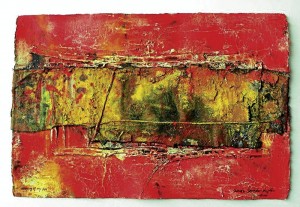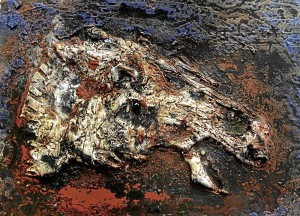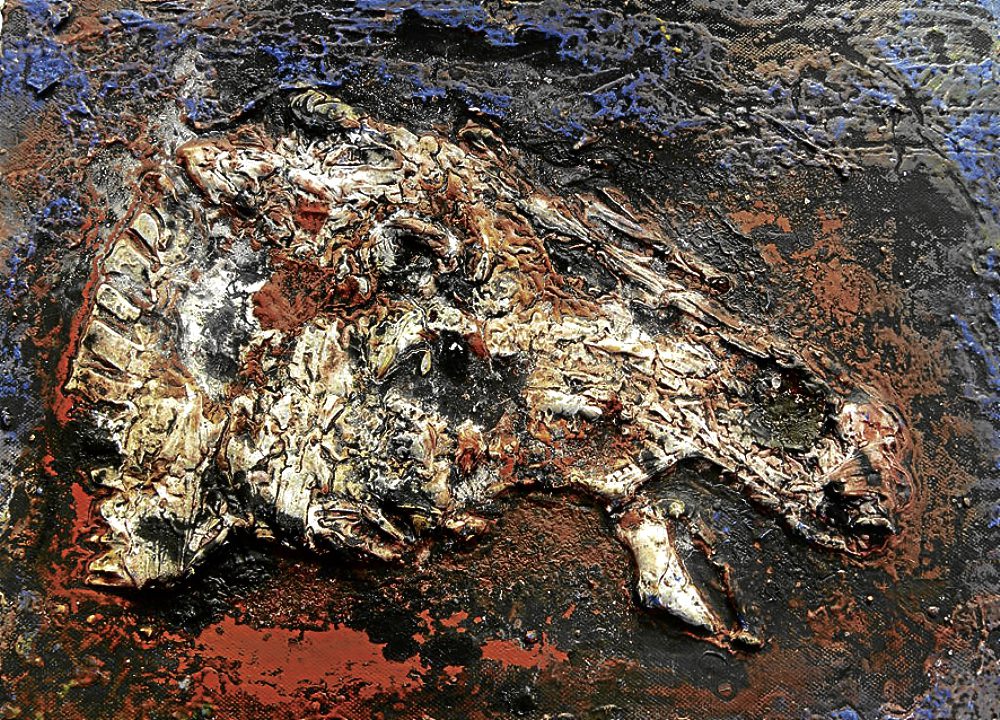
The Spaniard has come back. We expect international artist Ginés Serrán-Pagán to come to the country again and again, as he seems to have found the Philippines his second home.
“I find myself thinking of this country as my home every time I am anywhere else,” he admitted at one time. “I have adapted to this country as well as thousands of Filipinos have adapted to their second homes all over the world… Some foreigners are looking forward to residing in the Philippines as much as some Filipinos are looking forward to residing abroad. I’m just lucky to have found the country early.”
One of the 1980s generation of Spanish painters, Serrán-Pagán has lived in Asia and Oceania for over 20 years. He has held 200 exhibits (98 solos, 102 group shows) in 25 countries in five continents. He is the contemporary Western artist with the most exhibitions in Asia. China’s Xinhua News considers him one of the most international contemporary artists in the world.
He is also an award-winning poet, filmmaker and anthropologist. His poetry book “Between the Sea and the Iron” won the Federico García Lorca International Award; his documentary “Memories of the Wind” won the top prize at the New York TV and Video Festival; and for reinterpreting anthropological works in Andalusia he won the 1st International Award of Anthropology.
He first exhibited in the Philippines in 1995. He has since been perennially showing his art in Manila, and local art-lovers can even follow the development of his art-making: painting, sculpture, ceramics.
A few years ago, he expressed his sentiments for the country in an exhibit called “Memories of the Philippines,” in Galleria Duemila (when it was still at SM Megamall in Mandaluyong City).

Whereas in previous exhibits his art displayed motifs and patterns verging on abstraction, in that show it had evolved into figuration. The texturing and rough rendering of lines made the figures appear quite real, their reality authentic.
He works mostly with oil, acrylic, rope, fabric and sand on canvas, in a fine melding of art and anthropology. The highly textured paintings verge on relief, he has to call it “mixed technique on canvas.”
Distinctive work

The art has acquired full figuration in his latest show “Viajes y Recuerdos,” ongoing until Oct. 31 in Altro Mondo, L/3, Greenbelt 5, Ayala Canter, Makati City. Here the combine paintings have further evolved into low reliefs and, finally, full-scale sculptures.
These are 18 pieces in mixed media on canvas, handmade Thai paper and Arches paper; and five sculptural works in bronze, in mixed technique on old book, and in clay, copper and glass. They include early pieces from 1998 and 2003 to the most recent this year.
Zen-like abstraction can still be seen in the paintings “Uchikawa River, Japan,” “Between You and Me,” “Palabras,” “Mas Alla de Mi,” “Allegory of My Life” and “Memories of Chieng Mai,” and the sculptural piece “The Silence of Words.”
But though they’re still abstracted, recognizable figures are emerging in most of the pieces: equine profile in “The Turquoise Horse,” “Tang Horse” and “Memories of a Horse”; doorway framing the blue deep in “Door in the Sea”; broken heart in “Corazon Profundo”; female nude in “Dasha” and “Maria”; male figure in “Chinese Wise Man”; bull in “Toro”; shack by a tree in “Art Studio in Altai Siberia, Russia”; sailboat in “The Journey.”
Cited by critics for “the depth of his work and the strength of his color,” he saturates his paintings in near monochrome, either muted or vivid, chiefly of blue, green, slate, white, gray, some yellow, red, brown, ochre.
Red blazes in “Allegory of My Life” and “Memories of Chieng Mai.” Yellow scorches in “Chinese Wise Man” and “The Silence of Words.” Blue blinds in “Maria,” “Door in the Sea,” “Danza del Amor.”

Each canvas is literally heavy with layered pigments, characterized by rough expressionist lines and solid expressive colors. Even the achromics look distinctive and lovely, the gray ranging from charcoal to fog, pearl and dove.
Pieces like “Tang Horse,” “The Irori,” “The Journey” and “Dasha” can only be called basso-relievos—so tactile the mediums threaten to leap out of the canvas.
The sculptural pieces range in size, underscoring the artist’s mastery of the medium—from an old book spattered with hues in “The Silence of Words,” to the medium-size half-clad female body in “Timeless,” to the near life-size horse in “Caballo.”
A small surprise is the gemlike “Nude,” a miniature depiction of a female torso done by mixing clay, copper and glass. This is an innovative technique, giving the metal piece a glassine quality, which makes it glisten like polished granite.
More stupefying are the twin sculptures he created, “The Pillars of Hercules” and “The Union of the World” (now in Miami), which are not just heroic figures but monumental ones. Eight meters high and weighing eight tons each, they have been acknowledged as the world’s biggest bronze sculptures based on classical mythology. Their estimate lifetime is 10,000 years.
Authentic artist
Born in Ceuta, Spain, Serrán-Pagán studied Humanities in Seville, then proceeded to New York University to study Anthropology. He took up residence in Manhattan for 30 years.
He explored Hudson Bay by canoe. He also lived with the Sioux at Yellow Thunder in South Dakota, participating in their religious ceremonies and becoming their adopted brother in the Sun Dance. This was the life experience that led him to paint in 1983.
He traveled to Tepoztlán with Colombian artist Fernando Botero to meet Mexican master Rufino Tamayo, who introduced him to Japanese sculptor Kyoshi Takahashi, later to become his mentor in Japan.
By 1990, he started living and painting in remote peasant and fishing villages of Japan, China, Philippines, Australia, Malaysia, Indonesia, Thailand, India, Tahiti. “In the simplicity of these peoples’ lives and in the symbolism of their cultures,” says his biographical note, “he looks for a force he believes the West has lost.”
In all this, he does humanitarian works: donating his art for charities; defending the human rights of Native Americans; helping other artists and writers; protecting farm animals. This is one artist of whom one can say he lives his art rather than just churns out artworks for auctions.
In the Duemila show, the roof, floor tiles, columns, arches and woodworks—such as the brick roofing in “Tejas Blancas,” or what appeared to be a wall of painted roughhewn wood planks in “Beyond the Color Blue”—weren’t just banal architectural details. To the artist, they, along with crucifixes, signified the link between Spain and the Philippines. (And what significance, ranging from the cultural to the historical.)
“Though I spend most of my life abroad,” Ginés Serrán-Pagán explained, “I have always tried to create in my art a cultural bridge between my country Spain and the Philippines. The two are tied together by their histories and cultures.”
Consider ourselves privileged then to have this art richly spread out before our eyes.











































